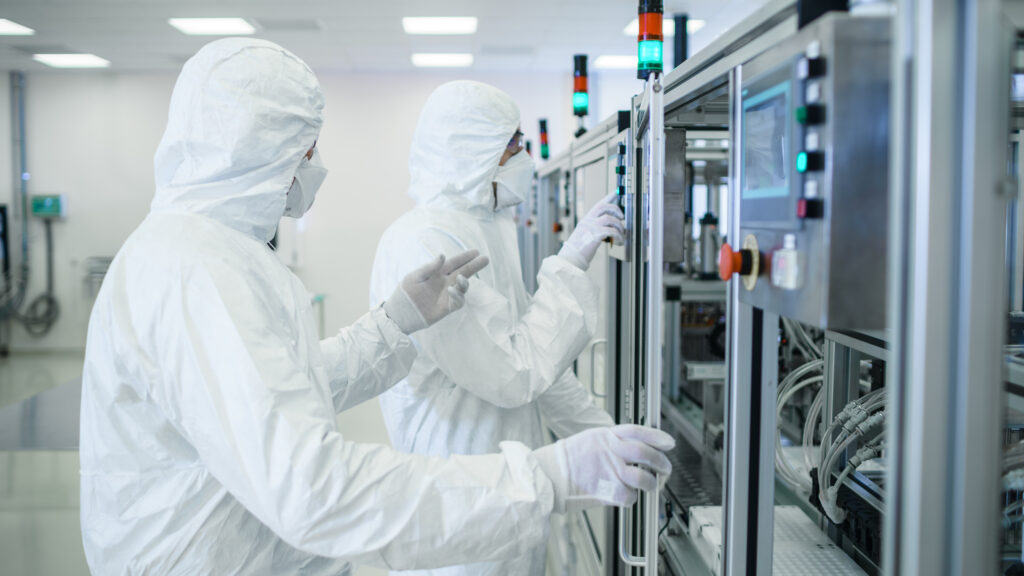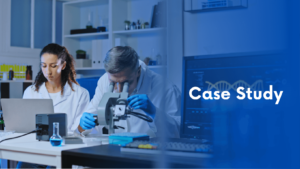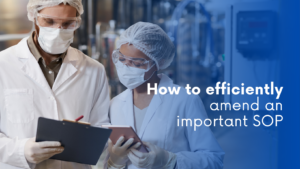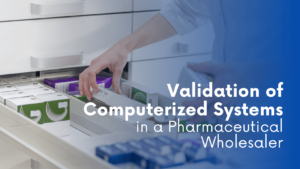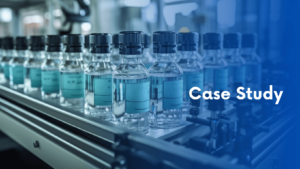Introduction
The pharmaceutical industry is characterised by numerous requirements governing its functioning. In my professional history, I have yet to meet an employee of this industry, who couldn’t wait to see an amendment to the Good Manufacturing Practice (GMP) requirements. The next edition of the legislative document is associated with investments, staff shortages, inconsistencies, work load of employees and endless hours spent on risk analysis. When operating in the pharmaceutical industry, it is worthwhile to be aware of GMP trends and not just only the current requirements.
Annex 1 (Manufacture of Sterile Products) to the EU GMP regulations (EudraLex Volume 4) is currently under revision. Do we already know when the finished document will be introduced into the legislation of the Member States? What final form will it be implemented? Unfortunately, we do not know that yet. Is it worth taking an interest in the current form of drafts? Definitely!
Which manufacturers should be interested in amending Annex 1?
Annex 1 is essentially about the manufacture of sterile forms of medicines. However, some of its provisions (e.g. requirements for room finishes, testing of the classification of premises, pressure cascades) are used by manufacturers of non-sterile medicines. This is because the remaining provisions of the law lack the necessary details and clear requirements. In the current draft, we can find unequivocal information that some of its provisions may be implemented in the quality system of a manufacturer of non-sterile medicines. This mainly concerns the products that are particularly vulnerable to contamination during production.
A company’s vast human resources are involved in the creation of a Quality Assurance System (QAS), which should meet all legal requirements, be easily understood by employees and allow the product to be marketed as efficiently as possible. In addition to the so-called hard law – uniform in the European Union, translated into national languages, there are also regulatory lower-ranking but more-detailed documents. These are Q&A issued by EMA, ISO standards, guides (e.g. issued by ISPE), WHO guidelines and many others. The latter documents often precisely describe how the vaguely written requirements of hard law can be met. Although the draft of Annex 1 is 40 pages longer (initially, it was 12 pages, and 52 pages were proposed in the final version), it does not necessarily mean a revolution in the currently operating plants. If we look in detail at the proposed provisions in the draft, we get the impression that the vast majority of these requirements have been already met by these companies. The new provisions combine the requirements of existing law with components of so-called soft law, containing both specific and working details.
What modifications to the requirements have been proposed in the current draft of Annex 1?
Apart from the more precise provisions, the following changes should deserve special attention:
- A much greater share of risk management methods are established. Every activity related to sterile production should be designed using risk management methods. Risks should also first be limited by reducing the harmfulness and frequency of errors, and only in the second wave should the methods of error detection be increased.
- A new type of risk analysis has been introduced – Contamination Control Strategy (CCS). This document is quoted in a new draft in many different areas. CCS should be implemented throughout the plant to define all critical control points and assess the effectiveness of all control measures (design, procedural, technical and organisational) and monitoring measures related to contamination control. All contaminants, including microbiological, endotoxins, pyrogens and particulates, would be the subject of this document. It has been clearly stated that the document is to be “living”, i.e. it should change as the knowledge and awareness of the manufacturer’s personnel increases.
- Tests were imposed to visualise airflows. Visualisation of the effectiveness of pressure cascades, RABS systems, and tightness of premises (Containment leak testing) will be required. Previously, these requirements were part of EN ISO 14644-3. Films from the aforementioned smoke tests should cover both resting and operating conditions. However, the conclusions from the tests carried out should be taken into account when designing microbiological tests (including routine monitoring and qualifications).
- The concepts of “at-rest” state and “in operation” state have been developed. The “in operation” state should include the maximum number of personnel and the ongoing process or its simulation and the worst case of processes conducted in the room. Seemingly intuitive recording entails additional work. It involves selecting the worst case during the “in operation” tests and proving that such conditions were maintained during the PQ execution.
- Minor differences have been introduced in the scope of airborne particle testing during qualification and monitoring. The requirement to set empirical limits for particles in zone D during operation merits interest. The current Annex 1 requires only testing of the particles in class D at rest.
- A requirement has been introduced to determine the number of sampling points. It should be based on a documented risk assessment, including classification results, air visualisation studies and process and operational knowledge.
- The minimum scope and frequency of re-qualification of class-designated premises has been set.
- In addition to the information on the rotation of disinfectants, the use of sporicidal was recommended.
- The effectiveness of disinfectants must be proven in a worst case validation. The scope of this validation is very similar to the microbiological part of the validation of cleaning of production facilities and cannot be replaced by simple monitoring.
- Clothing management processes in clean rooms should be qualified.
What to do with knowledge of trends in GMP?
Is it worth preparing yourself for the new Annex 1 draft right now? In fact, this is still a law project, which is still being evaluated by organisations and associations of industry professionals. Once a common version has been developed, the final wording may be subject to significant changes. By implementing the proposed solutions, manufacturers risk wasted resources and perhaps found inconsistencies with the current law. Therefore, one of the solutions is to wait for the completion of the legislative process amending Annex 1.
The second possibility is to implement certain solutions right now. Certainly not those which are contrary to the current law. However, it is worth taking into account the evolutionary change in the QMS documents (and, consequently, in the practice of the production plant) already now. During reviews and revisions due to other needs, procedures can be developed in accordance with both the current law and the new draft of Annex 1. A convenient tool to control the whole process of adjusting the plant may be the so-called “Traceability matrix”, where each legal requirement will be assigned to system, organisational and hardware actions. This would make it possible to assess the compliance of the plant’s QMS with the proposed new law and assess the scale of possible work in the event of the need to adapt to the new guidelines. It is worth being aware of the likely legal changes, especially before investments (planned for a dozen or so years) and the qualifications of new areas. By following both the requirements in force and the proposed legal changes, investments will avoid, for example, repetition of qualifications. The risk of this approach is the involvement of human and financial resources despite the lack of formal requirements. The profit may be the spreading of the revolution in the QMS and optimisation of investments.
Annex 1 is being amended. The list of organisations that are currently commenting on the content of the draft is impressive and gives hope that the final wording of the new legislation will be precise and easily understood by manufacturers. It is not certain when the new rules will exactly come into force, but it is a good idea to take an interest in them now. Regardless of whether the manufacturer, by taking a business decision, will already begin to implement elements of the legal proposal or will wait for legal changes, it is worth being aware of the likely legislative changes which will take place in the near future.
